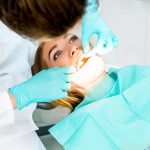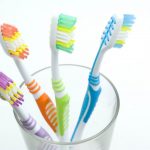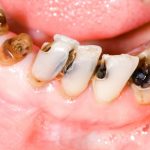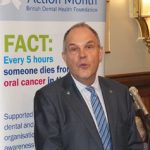Imagine this scenario…
A person walks into your practice, approaches the front desk and says: ‘Hi, I’m looking for a new dental practice for myself and my family, can you tell me if you’re taking on new patients and, if so, a little bit about the practice?’.
Would your front desk team know exactly what to do and say? I mean exactly?
Do you have a well-developed approach that each member of the front desk has been trained in and feels comfortable delivering? Or is it a bit of a lucky dip?
First things first, leads don’t come any hotter than someone standing in your reception saying they’re looking for a new dental practice. If you lose this person now, you really will have grasped defeat from the jaws of success!
A little while ago, that person in reception was me. I was looking for a new practice for myself, my wife and our four children – six potential new patients all neatly packaged in one enquiry.
I’d done the usual thing and googled ‘dentist in my area’, but then I went one step further and visited three private practices and presented myself as in the scenario above. In fact, I used those exact words.
There’s no easy way to say this, but all three practices were uniformly useless! Not one was able to convert the hottest of leads into new patients for their practice.
Why?
Well, it was clear that none of the practices were prepared for such an enquiry. Not one of them asked me my name or told me theirs. Not one asked if I had any specific dental needs or problems at present. They didn’t explain the approach or principles of their practice. They didn’t offer to show me around or take me to a more private area where we could talk more easily. They didn’t offer me a drink. They didn’t ask about my family. They didn’t ask for any contact details and…critically, they didn’t offer me an initial appointment or consultation.
They did bombard me with a long list of prices that were impossible to follow and they also gave me their ‘welcome pack’ – in each case a folder stuffed with pieces of paper with enough words for a small novel.
And so, one by one, I left, never to be seen again. Six potential new patients disappearing into the ether, leaving a front desk team with no ability to follow up.
If I was the principal/owner of those practices I would be horrified to learn that such a golden opportunity had been lost. But then again, when all is said and done, it would be my fault. The front desk team are only as good as the leadership, training, resources and ongoing support they receive.
So, ask yourself…do you know how many enquiries your front desk is dealing with each week? If you do, do you know what the conversion rate is for those enquiries? Where they came from and how they heard about the practice? Are you confident that, when you’re in surgery, your front desk team have the skills and processes to convert enquiries into patients at a healthy rate?
If you don’t know the answer to these questions, the growth and sustainability of your practice is being left to luck and chance.
In the few years since I made those visits, my family has spent in excess of £8,000 on dentistry and that’s from just one potential enquiry that got away. How many more and how much potential income are you currently losing out on?
Investing in your front desk team could be the best thing you ever do.
Les Jones is the Creative Director at Practice Plan, the UK’s number one provider of practice-branded dental plans. If you are interested in finding out more about how we help practices to become more profitable, call 01691 684165 or visit building.practiceplan.co.uk















